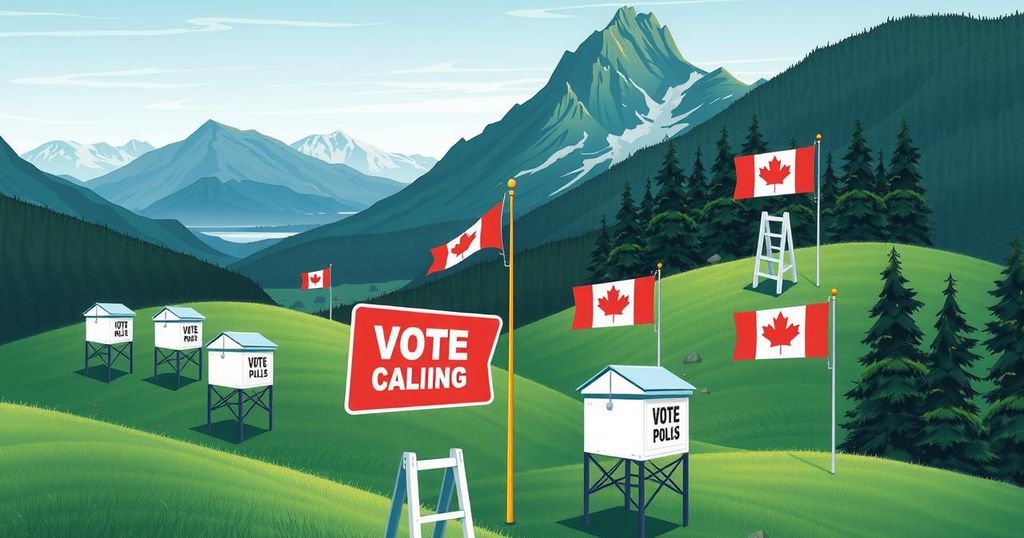Canada Faces Precise Political Crossroads as Election Approaches
Canada’s imminent election sees Pierre Poilievre and Mark Carney vying for leadership. Carney’s ascent follows turmoil triggered by Chrystia Freeland’s resignation, reflecting challenges within the Liberal Party. The election will likely focus on safeguarding Canada from external pressures, particularly from Donald Trump’s ambitions, with both leaders presenting contrasting visions for the nation’s future amid significant societal concerns.
As Canada approaches what may be its most significant election, the stage is set for a pivotal confrontation between Pierre Poilievre and Mark Carney. Carney’s ascension to the Liberal Party leadership, following a dramatic resignation from Deputy Prime Minister Chrystia Freeland, signals a crucial moment for the Liberal Party, which seeks to regain its footing amid internal turmoil and an increasingly formidable Conservative opposition led by Poilievre.
Freeland’s resignation as finance minister sparked a crisis within the Liberal Party, compelling Prime Minister Justin Trudeau to confront the reality that his leadership was faltering. Once a trusted figure, Freeland’s actions inadvertently paved the way for Carney’s leadership candidacy, yet not without significant backlash from her peers. Her low first-ballot support further underscored her fall from grace within the party ranks, leaving Carney to emerge as the party’s new leader.
With Carney expected to initiate a national election following his swearing-in as prime minister, the campaign is likely to focus on the crucial question of national security and identity. The looming presence of Donald Trump and his potential ambitions concerning Canada necessitate a discussion on whether Canada can safeguard its sovereignty against external pressures, notably Trump’s envisioned annexation of Canada as the 51st state.
Poilievre had been moving towards a strong electoral position, appealing to the electorate by framing the election as a contrast between a stagnant Liberal government and a brighter, more equitable future under Conservative leadership. However, the recent resurgence of concerns surrounding Trump’s nationalist policies has shifted the narrative, prompting voters to reconsider their alignment as they weigh national integrity against domestic political ambitions.
The Conservative Party’s momentum has seen a decline, giving opportunity for the Liberals to regain support by positioning Poilievre’s approach as divisive and linked to Trump, who is viewed unfavorably by many Canadians. Carney has capitalized on this sentiment, condemning Poilievre’s alignment with Trump in an effort to paint him as unfit for leadership. The approaching election thus reveals a critical divide in Canadian political discourse, reflecting broader societal concerns.
While Carney is often perceived as a technocrat with less appeal in public engagement, his challenge will be to connect with voters in a meaningful way. Conversely, Poilievre has demonstrated skill in conveying simple yet impactful messages, making him a formidable opponent. The stark contrast between their leadership styles sets the stage for a fierce electoral battle that will ultimately determine Canada’s direction and identity in the face of unprecedented challenges.
In summary, the forthcoming Canadian election presents a defining moment for the nation as Pierre Poilievre and Mark Carney prepare to contest leadership amid significant political and societal upheaval. Carney’s rise within the Liberal Party highlights the precarious position of the current government, exacerbated by external pressures from the United States and internal party dynamics. Ultimately, the election will center on critical themes of national sovereignty, political identity, and the contrasting visions both leaders present for Canada’s future.
Original Source: www.aljazeera.com




Post Comment